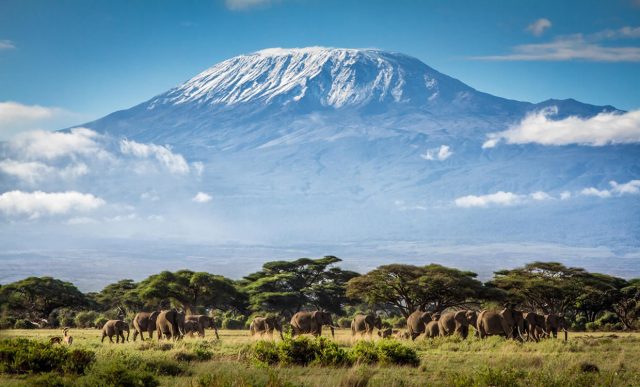Tanzania is a country that encompasses an extraordinary history and abundance of natural wonders; therefore there is no surprise Tanzania has eight world heritage sites. These chosen sites are a fundamental reminder why interaction between people and nature must achieve a balance of preservation and conservation between the two.
KILIMANJARO NATIONAL PARK:
The Kilimanjaro national park is located near Moshi, Tanzania. It is centered on the iconic and dramatic snow-clad slopes of mountain Kilimanjaro which covers an area of 753 km (291 square miles). In 1973, the mountain above the tree line was classified as a national park and was opened to public access in 1977,but it wasn’t until 1987 the park became listed as a World Heritage Site by UNESCO.
STONE TOWN ZANZIBAR
Stone town or Miji Mkongwe in Swahili meaning “ancient town”, is the old part of Zanzibar city. The old town is built on a triangular peninsular of land on the western coast of the island and was awarded World Heritage Site status in 2000. Justification for the inscription includes its cultural fusion and harmonization; its great symbolic importance in the suppression of slavery; and the intense seaborne trading activity between Asia and Africa, which is illustrated today in the exceptional architecture and urban structure of the stone town.
THE NGORONGORO CONSERVATION AREA;
The Ngorongoro conservation area (NCA) boasts the finest blend of landscapes, wildlife, people and archaeological sites in Africa and is situated 180 km west of Arusha. The rich pasture and permanent water of the crater floor supports a large resident population of wildlife of up to 25000 predominant grazing animals. The conservation area is administered by the Ngorongoro Conservation Area Authority, and its boundaries follow the boundary of the Ngorongoro division of Ngorongoro district. It covers an area of 8,288km (3,200 square miles).
SELOUS GAME RESERVE;
The Selous game reserve covers a total area of 54600 km (21,081 square miles) and is one of the largest fauna reserves of the world, located in the south of Tanzania. It was designated a UNESCO World Heritage Site in 1982 due to the diversity of wild life and undisturbed nature. The reserve is home to typical savanna animals such as elephants, hippopotami, the rare African wild dog and crocodiles, which are all found in large numbers compared to any other park in Africa.
SERENGETI NATIONAL PARK
The Serengeti national park is Tanzania’s oldest park, and one of the world’s last great wild life refugees, hence its World Heritage site status. It is most famous for its annual migration of over one million white bearded ( or brindled) wildebeest and 200,000 zebra. The park covers 14,763 km(5,700 square miles) of grass land plains and savanna as well as riverine forest and woodlands. The park lies in the north of the country, boardered to the north by the national Tanzania and Kenya boarder, where it is contiguous with the Masai Mara game reserve.
KONDOA ROCK ART SITES
The Kondoa rock art site is a series of caves carved into the side of a hill looking out over the steppe. The cave site is 9 km off the main high way from kondoa to arusha, about 20 km north of kondoa. The site has a spectacular collection of images from over 150 shelters depicting elongated people, animals and hunting scenes. Today many of the shelters are still considered to have ritual associations with the people who live nearby, reflecting their beliefs, rituals and cosmological traditions.
RUINS OF KILWA KISIWANI AND RUINS OF SONGO MNARA
The remains of two great east African ports admired by the early explorers are situated on two small islands near the coast. From the 13th to 16th century, the merchants of Kilwa delt in silver, gold, pearls, perfumes, Arabian crockery, Persian earthenware and Chinese porcelain; much of the trade on the Indian ocean thus passed through their hands. Serious archeological investigation begun in the 1950’s. in 1981 it was declared a World Heritage Site, and noted visitor sites are the great mosque, the Mkutini palace and some remarkable ruins. However, the ruins are also in the list of the World Heritage in danger. The list constitutes a call to improve their safeguarding and is designed to rally national and international efforts for their preservation.








